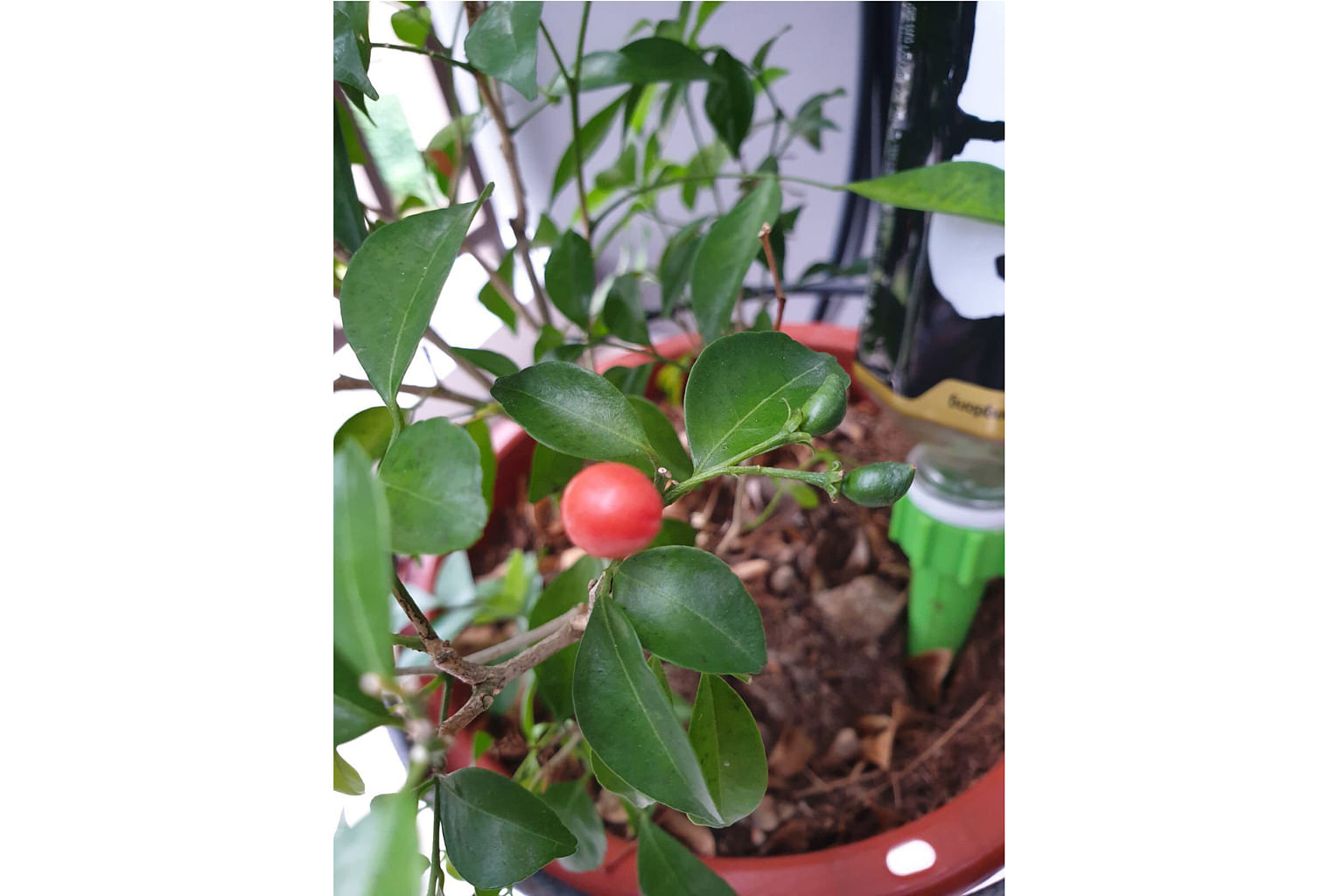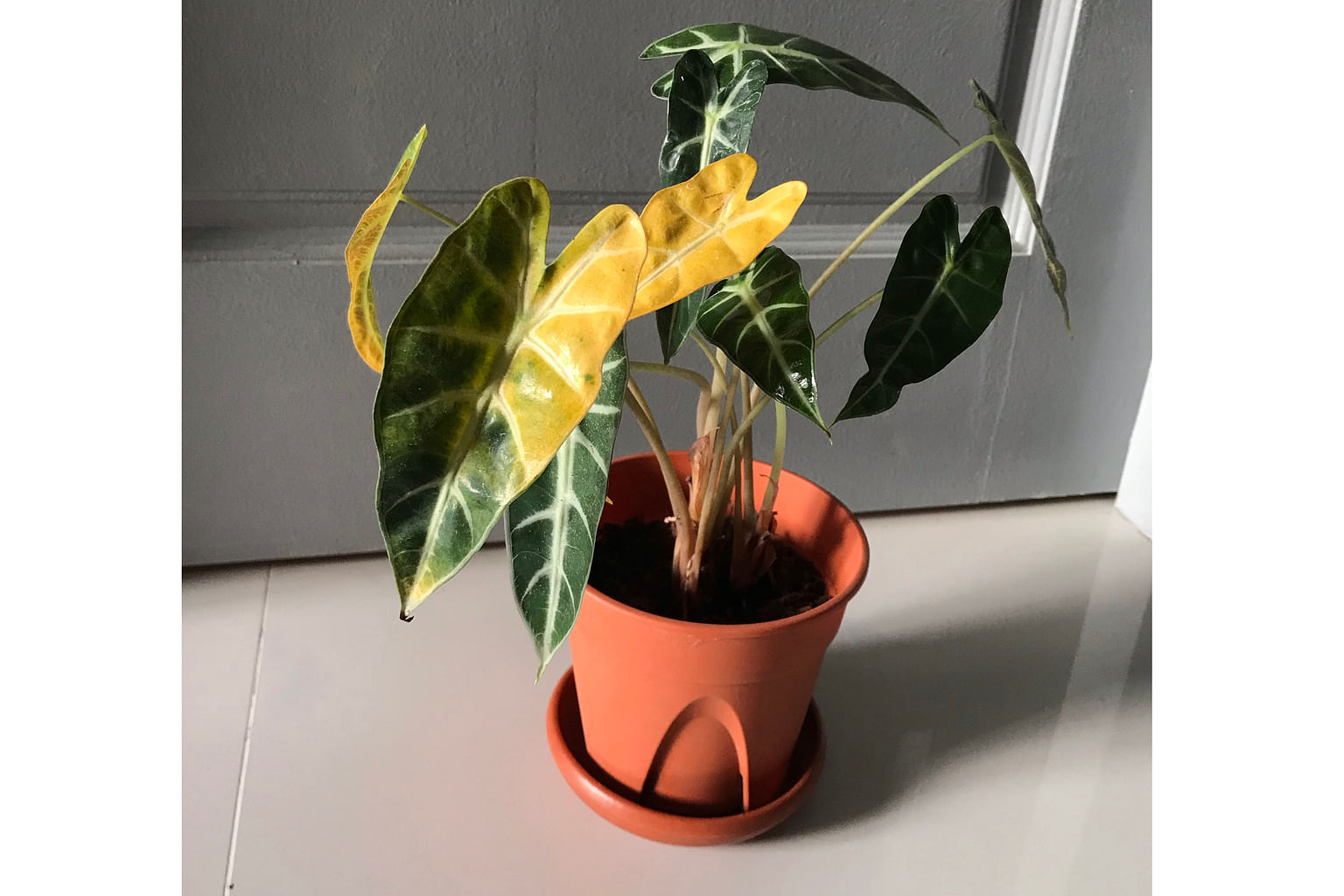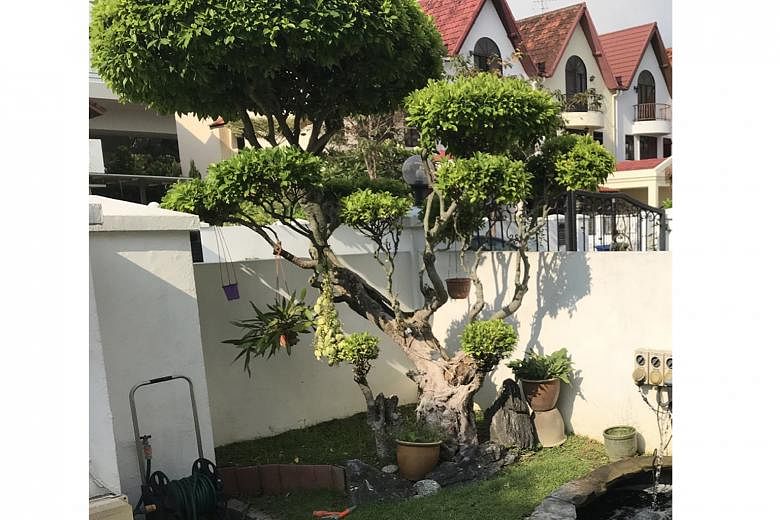Ficus needs sunny spot and well-drained soil to thrive
What kind of bonsai tree (above) is this and how do I take care of it? When I first saw it, there were many black hairy caterpillars around the roots - are these harming the tree?
Peter Loon
The plant is a Ficus species.
The most common species used to make such bonsai trees is the Indian Laurel Fig, botanically known as the Ficus microcarpa.
The plant should be grown on a sunny site and the soil should be well-drained.
To keep its form, periodic pruning needs to be done.
As for the caterpillars around the base of the plant, they can be removed and discarded if they bother you. Some individuals may be keen to keep them.
The caterpillars are probably the larvae of moths and they have an ecological role in the garden.
If they do not defoliate your plant - or even if they do and you can accept the transient, imperfect look of the tree - these caterpillars can be left alone.
Once they turn into adults, the damage will stop and there will be new growth.
Bird's nest fern has fungal disease

I bought an asplenium recently. Strangely, all the new leaves started to turn brown and mushy near the tips or in the middle (above). This does not affect the older leaves. What could be the cause?
Dominic Then
Your bird's nest fern (Asplenium nidus) appears to be suffering from a fungal disease.
To stop its spread, it is recommended that you cut away the entire affected leaves.
You may want to apply a chemical fungicide such as captan, available from most nurseries, to treat the issue.
Ensure that the plant gets sufficient sunlight - in this case, at least four to six hours of filtered sunlight - and good air circulation that is needed for healthy growth.
Also, check if any chemicals were applied on the plant - these may cause burns on the leaves as the fern may be sensitive to them.
An overdose of pesticide or fertiliser can also lead to similar symptoms. In such cases, damaged leaves can be cut away for new growth to replace them.
Test any chemical you want to apply on a small part of the plant before using it on the entire plant.
Fertilisers should be applied in lower doses than what is recommended on the label at the first instance as a precaution.
Mock Lime good choice for fragrant gardens

I got this plant which had white flowers. Now, there is a red fruit (above) which looks like a cherry tomato. What plant is this and is the fruit edible?
Cynthia Yow
It appears that the plant is the Kemuning, which has common names such as Mock Lime, China Box and Mock Orange and is botanically known as Murraya paniculata.
This plant can grow either as a shrub or a small tree and is commonly used for garden hedges.
It is appreciated for its scented white flowers, making it suitable for fragrant gardens.
The fruit is documented to be edible according to a number of sources, although this plant is not commonly regarded as an edible fruit plant species.
Before consuming any part of a plant, its identity must be verified.
Scant information about whether small-leafed noni's fruit is edible

What is the name of this plant (above) and is the fruit edible?
Winston Lee
The plant appears to be the Mengkudu Daun Kecil, which means small-leafed noni in Malay. Its botanical name is Morinda angustifolia.
It is a relative of the noni tree (Morinda citrifolia), which is well known for its edible fruit and leaves.
This Morinda species can be seen sometimes as a self-sown plant in housing estates and disused areas, probably spread via seed dispersal by animals like birds.
The fruit of this tree is very small and not much has been documented about its edible uses.
The plant's leaves reportedly have traditional medicinal uses.
Amazon Elephant's Ear may be lacking sunlight and water

The leaves of this plant (above) have been turning yellow. I place it in a shaded spot because I was told it is a shade-tolerant plant. How can I nurse it back to health?
Cheryl Teo
The plant may be the Amazon Elephant's Ear (Alocasia x mortfontanensis) or a related hybrid.
It thrives if it gets four to six hours of filtered sunshine daily. It should not be grown in the house where it is too dim to support growth. Under dim conditions, the plant will deteriorate over time.
The yellow patch could be a sign of burn due to excessive intense sunlight.
Move the plant to a location with filtered sunshine. Damaged leaves will not recover, but new growth will replace them with time.
The reason for the yellow leaves could also be due to a lack of water. When a plant lacks water for a prolonged period, one of the initial symptoms would be that some of the older leaves turn yellow and dry up.
However, also take note not to keep the roots wet all the time as the plant can succumb to root rot and die.
• Answers by Dr Wilson Wong, an NParks-certified practising horticulturist and park manager. He is the founder of Green Culture Singapore and an adjunct assistant professor (Food Science & Technology) at the National University of Singapore.
• Have a gardening query? E-mail it with clear, high-resolution pictures of at least 1MB, if any, and your full name to stlife@sph.com.sg

